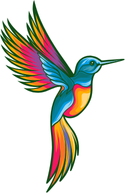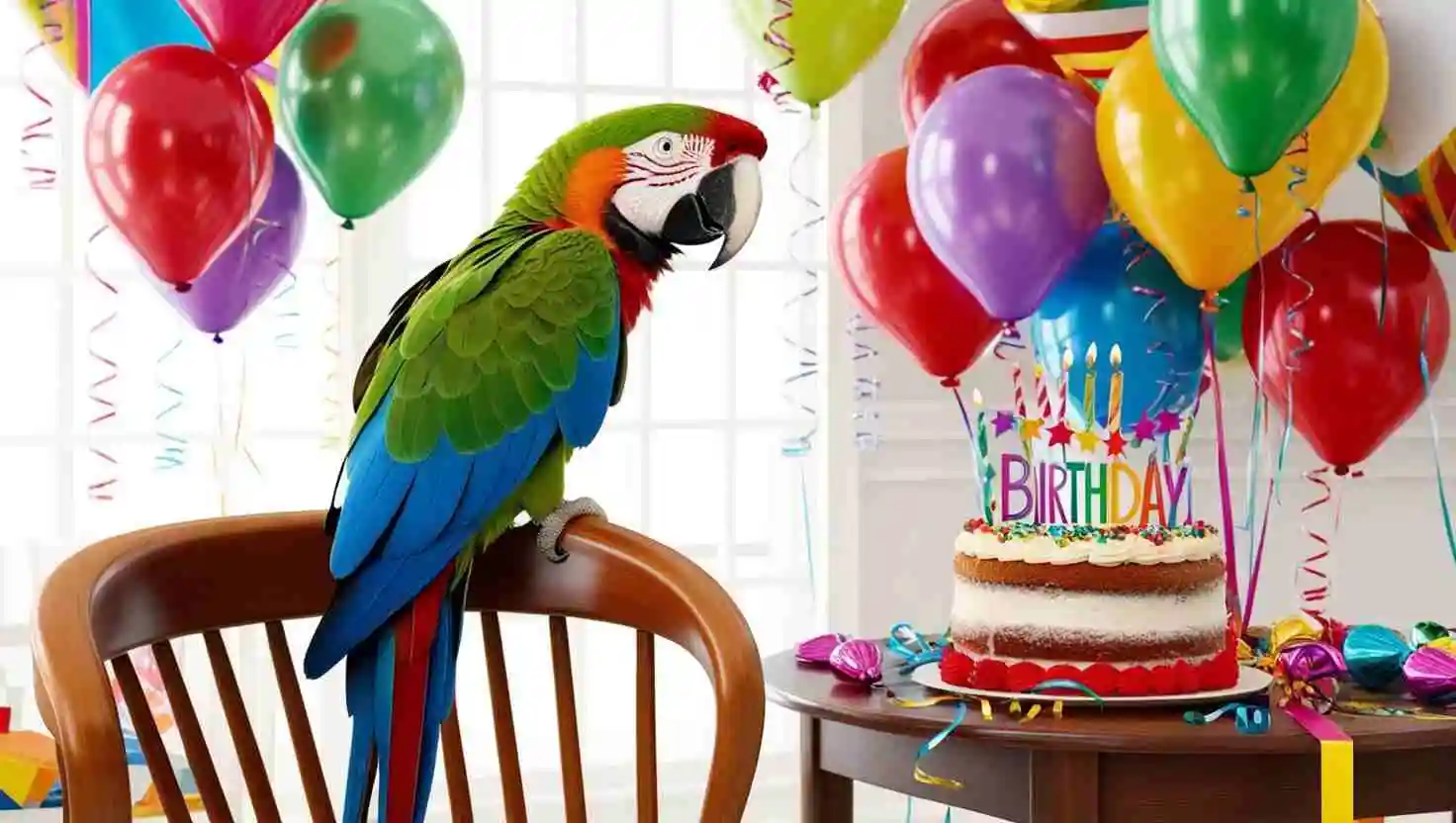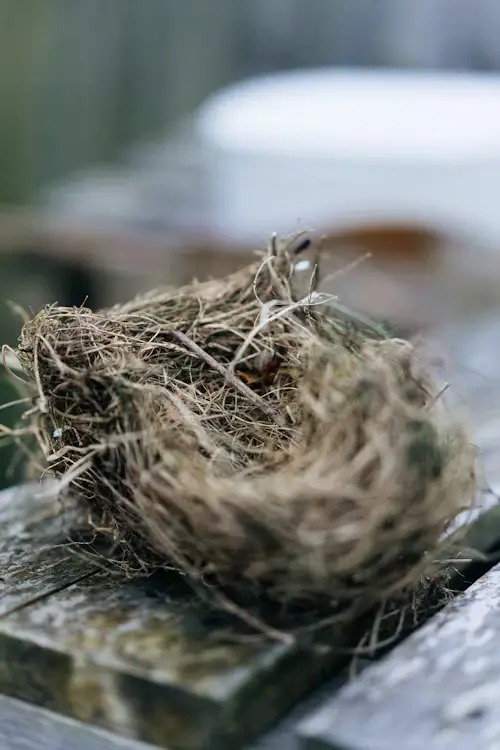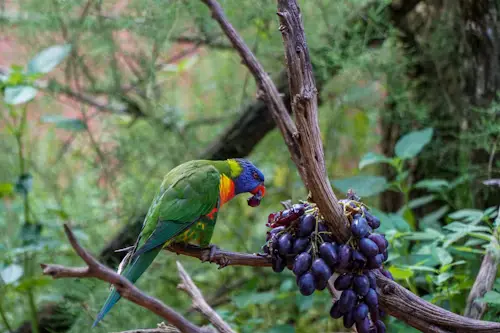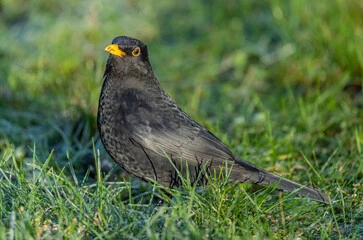House Finch Bird: Proven Ways to Attract Vibrant Visitors
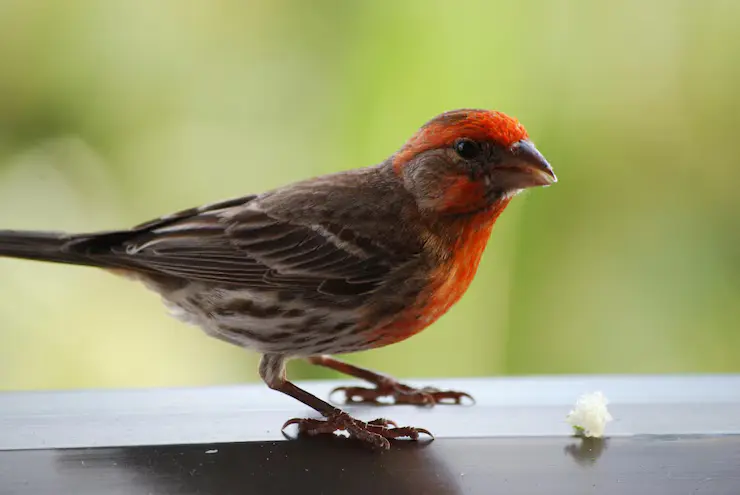
Remember that first splash of red at your feeder? The cheerful chorus that turns your garden into a living kaleidoscope? For many of us, the House Finch bird is more than just a visitor—it’s the heartbeat of our backyard sanctuaries. I recall a chilly February morning when a vibrant male, his chest blazing like a tiny ember, stared back at me through the window. It wasn’t just birdsong; it felt like an invitation into a wilder, more vibrant world. These adaptable, spirited birds bring endless joy, but their care, diet, and lookalike cousins often leave bird lovers scratching their heads. Let’s unravel the charm of the House Finch together.
Table of Contents
Meet the Charismatic House Finch

Native to Mexico and the arid Southwest, the House Finch (Haemorhous mexicanus) has conquered North America with resourcefulness. Their expansion is a quirky tale: New York pet shops releasing birds illegally in the 1940s led to an eastern population explosion! Today, they’re fixtures from coast to coast.
Spotting one is easy:
- Males: Flashy red-orange (sometimes yellow) on the head, throat, and upper breast against a streaky brown back. A bright red rump is visible in flight.
- Females: Subtler beauties clad in gray-brown with heavy, blurry streaking below and a distinctive plain face.
- Size & Shape: Compact body (5-6 inches), large beak for crushing seeds, and a long, slightly notched tail.
These sociable birds thrive near humans—nesting on buildings, porch ledges, and in hanging baskets. Their sweet, warbling song is a backyard soundtrack year-round. Want to explore other captivating species? Dive deeper into our dedicated bird species section.
Essential House Finch Care (Attracting & Supporting Wild Birds)
While traditionally wild, understanding how to ethically support and attract House Finches is crucial for their well-being. “Care” here means creating a haven.
Safe Haven Fundamentals:
- Shelter & Nesting: Offer dense shrubs, evergreens, or nest shelves. They readily use artificial sites. Avoid disturbing nests once active!
- Predator Prevention: Place feeders 5-10 feet from cover (for quick escape) but away from bushes where cats hide. Use baffles on feeder poles.
- Clean Water Source: A birdbath (clean 1-2 times weekly!) is vital even year-round. Add a heater in winter.
- Health First: Be alert for House Finch Eye Disease (conjunctivitis). If you see a puffy-eyed or lethargic finch, STOP feeding, clean feeders with bleach, and report it to wildlife authorities. Restart after 2 weeks.
The most rewarding “care”? Simply observing and respecting their wild nature.
Nourishing Visitors: The Ideal House Finch Diet
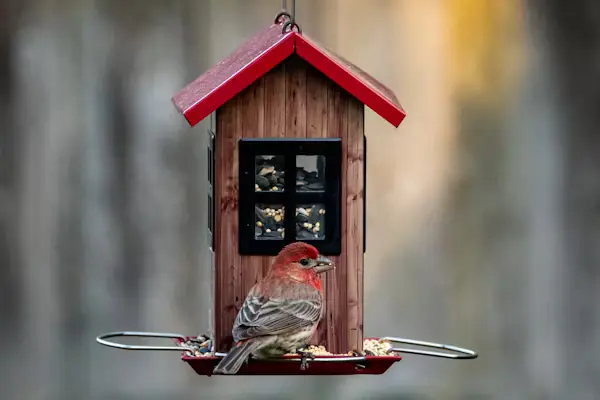
What fuels that fiery plumage and cheerful chatter? A seed-centric feast! As true granivores, over 90% of their diet comes from seeds and fruits.
Diet Staples:
- Natural Foraging: Seeds of weeds (dandelion, thistle), grasses, flower buds, berries, small fruits, and minor insects (especially when feeding young).
- Bird Feeder Favorites: These feathered gourmands adore:
- Black oil sunflower seeds (their top preference!)
- Hulled sunflower hearts (easy to eat, less mess)
- Nyjer (thistle)
- Safflower (less palatable to squirrels)
- BEST THING TO KNOW: Avoid low-quality “fillers” like milo, wheat, and oats. They pick around these, creating waste and attracting rodents.
Feeding Station Tips:
- Tube feeders, mesh socks (for nyjer), and hoppers are all popular choices.
- Platform feeders allow easy access but require frequent cleaning to prevent disease spread. Explore our trusted feeder recommendations.
- Keep feeders clean! Wash biweekly with mild bleach solution (1 part bleach to 9 parts water), rinse thoroughly, dry completely.
- Provide grit (small stones or coarse sand) – essential for digestion.
| House Finch Diet Daily Accessories | |
|---|---|
| Essential Seeds | Black oil sunflower, Nyjer, Safflower, Hulled sunflower hearts |
| Enjoyed Fruits | Apples (sliced), berries (blueberries, raspberries), raisins (chopped) |
| Critically Avoid | Bread, salty snacks, processed sugars, low-quality “supermarket mixes” |
| Vital Supplement | Fresh water daily, year-round. Clean birdbath essential! |
The Great Lookalike Challenge: House Finch vs Purple Finch
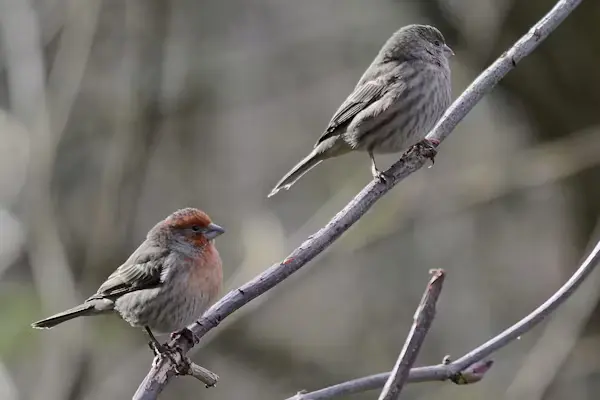
“Was that a Purple Finch? Or just a really red House Finch?” This question sparks debate! Both males sport red, females are streaked, but nuances abound. Here’s your cheat sheet:
Key Distinctions:
Male Plumage Color:
- House Finch: Red, orange, or sometimes yellow. The color is boldest on the forehead, throat, upper breast, and rump, fading into streaks. Back is brown. Think “ruby highlights”.
- Purple Finch: Raspberries spilled over vanilla ice cream! Deep raspberry pink/red washes over the head, neck, back, chest, flanks, and rump. Less distinct streaking. Think “dipped in wine”.
Body Shape & Bill:
- House Finch: Longer body, flatter head profile, longer tail. Bill is slightly longer and straighter.
- Purple Finch: More compact, stocky look with larger head. Head looks rounded or slightly crested. Bill is shorter, thicker, and markedly curved on the top ridge (culmen).
Streaking Pattern (Critical for Females):
- House Finch Female: Streaks on breast/belly are soft, blurry, and mud-colored. Face pattern lacks distinct markings. Looks warmly brown overall.
- Purple Finch Female: Has a bold face pattern: a coarse white eyebrow and a dark cheek stripe (like a mustache). Streaks below are sharper, coarser, and more defined. White belly color contrasts more noticeably with streaks. Looks cooler gray-brown.
A striking visual comparison complements this breakdown. Seasoned birders agree: context is key. Purple Finches favor coniferous forests and are perhaps slightly shyer, often dominant at feeders when present. But location is the strongest clue—House Finches are ubiquitous suburbs lovers; Purple Finches prefer colder northern/eastern forests year-round or descend south only in winter.
Why Backyard Stewardship Matters
These birds aren’t just pretty faces—they are ecosystem ambassadors. Observing them fosters invaluable connections with nature. By providing clean food, water, shelter, and vigilant care, you directly support local biodiversity. You become a vital part of their success story—a tale told through generations of brave western birds surviving snowy winters from Maine to Florida.
Listen closely to their cheerful twittering. Notice the devotion when a male feeds his mate tenderly. Witness fledglings discovering your sunflower hearts. It’s this daily magic that makes welcoming the House Finch bird more than a hobby—it’s stewardship.
FAQs: Your House Finch Bird Queries Answered
Q: Are House Finches aggressive towards other birds?
A: They can be assertive at feeders, particularly around prime perches or prized sunflower seeds. However, they generally coexist well with others. Squirrels and larger birds pose more of a threat to them!
Q: Do House Finches migrate?
A: Most populations are year-round residents, sticking close to their breeding territories thanks to bird feeders providing vital winter food. Some northern birds might make short southward journeys.
Q: Where exactly do they build nests?
A: Opportunists! Common sites include:
– Eaves, ledges, porch ceilings
– Inside hanging flower baskets or wreaths
– Protected branches of coniferous trees
– Birdhouse-style shelves designed for open fronts
Q: How long do House Finches live?
A: Sadly, wild lifespans average 1-1.5 years due to high fledgling mortality. However, individuals reaching adulthood under ideal conditions can live up to 10-12 years! Good habitat and food boost their odds.
Discovering the House Finch bird turns ordinary moments into encounters with pure, unfiltered beauty. It reminds us that resilience and joy exist right outside our windows—waiting only for a seed of invitation. Do YOU have unforgettable finch moments you want to share? Leave a captivating story or question below—we adore hearing your tales! Spark more fascination on Magical Pet Bird—explore guides on essential bird nutrition or delve into the secrets of songbird nests today!
